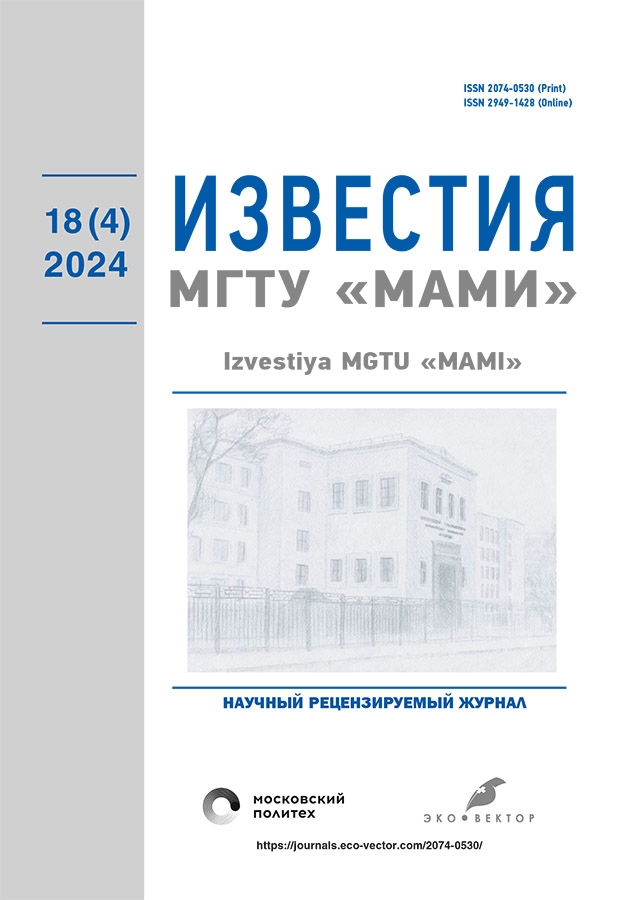Analysis of the effect of ion implantation on corrosion resistance and contamination of heat transfer surfaces
- 作者: Savelev I.L.1, Marushin L.A.1, Chugaev E.A.1, Semochkin I.S.1
-
隶属关系:
- Moscow Polytechnic University
- 期: 卷 18, 编号 4 (2024)
- 页面: 263-271
- 栏目: Теоретическая и прикладная теплотехника
- URL: https://bakhtiniada.ru/2074-0530/article/view/311251
- DOI: https://doi.org/10.17816/2074-0530-637194
- ID: 311251
如何引用文章
全文:
详细
Background: The paper addresses the problem of improving the energy efficiency and durability of heat exchange equipment. Particular attention is paid to improving the characteristics of heat exchange surfaces of heat exchangers, which play an essential role in many industries. The range of issues of pollution and corrosion of heat exchange surfaces and the causes that led to them are discussed.
Objective: Analysis of the effect of ion implantation on the contamination and corrosion resistance of heat exchange surfaces of the heat exchange equipment.
Methods: Within the framework of this study, comparative analysis methods to record changes in the composition of the surface layer of the samples under study were used. Microhardness studies were carried out in the direction from the surface to the depth of the test sample using the Neophot-2 device on transverse metallographic sections, which were cut perpendicular to the implantation.
Results: During the study, the data on changes in microhardness of aluminum samples after nitrogen implantation were obtained, as well as the data on changes in the structural composition of surface layers and increased resistance to corrosion, contamination, and prolonged exposure to surfactants.
Conclusions: As a result of the study, it can be said that a decrease in energy efficiency due to contamination of heat exchange surfaces is more pronounced in heat exchangers in which a high value of the heat transfer coefficient was initially designed. Ion implantation not only increases the microhardness and wear resistance of materials, but also prevents the appearance of an oxide film, which in turn reduces the contamination of the heat exchange surface, and also makes the heat exchange surface less susceptible to prolonged exposure to surfactants.
作者简介
Ilya Savelev
Moscow Polytechnic University
编辑信件的主要联系方式.
Email: totoroboy@mail.ru
ORCID iD: 0000-0003-0865-3826
SPIN 代码: 7043-6439
Postgraduate of the of the Industrial Heat Power Engineering Department
俄罗斯联邦, 38 Bolshaya Semenovskaya st, Moscow, 107023Leonid Marushin
Moscow Polytechnic University
Email: katzbalger@ya.ru
ORCID iD: 0009-0000-5240-0186
SPIN 代码: 3812-2917
Cand. Sci. (Engineering), Associate Professor of the Industrial Heat Power Engineering Department
俄罗斯联邦, 38 Bolshaya Semenovskaya st, Moscow, 107023Evgeniy Chugaev
Moscow Polytechnic University
Email: kafedrapte@gmail.com
ORCID iD: 0009-0008-5799-2166
SPIN 代码: 9726-3492
Postgraduate of the Industrial Heat Power Engineering Department
俄罗斯联邦, 38 Bolshaya Semenovskaya st, Moscow, 107023Ilya Semochkin
Moscow Polytechnic University
Email: ipc77@mail.ru
ORCID iD: 0009-0001-6057-6138
Postgraduate of the Industrial Heat Power Engineering Department
俄罗斯联邦, 38 Bolshaya Semenovskaya st, Moscow, 107023参考
- Velichko VI, Pronin VA. Intensification of heat transfer and increase of energy efficiency of convective heat transfer surfaces. Moscow: MEI; 1999. (In Russ.)
- Guhman AA. Intensification of convective heat transfer and the problem of comparative evaluation of heat exchangers. Heat power engineering. 1977;4:5–8. (In Russ.)
- Bergles AE, Fuller WD, Hynek SJ. Dispersed flow film boiling of nitrogen with swirl flow. Int. J. Heat Mass Transfer. 1971;14(4):1343–1354. doi: 10.1007/978-1-4757-0244-6_53
- Subbotin VI, Kaznovskiy SP, Salenkevich AP. Experimental study of ways to increase the critical power of steam generating pipes. Izv. AN SSSR. Energy and transport. 1974;2:162–170. (In Russ.)
- Anishchika VM, Poliaka NI, Ponaryadova VV, et al. Effect of High Energy Ion Implantation on the Structure and Mechanical Properties of Aluminium Alloys. Acta Physica Polonica Series a. 2017;132(2):291–294. doi: 10.12693/APhysPolA.132.291
- Chauhan K, Sharma Gh, Chauhan S. Chapter 29: Removal/Dissolution of Mineral Scale Deposits. In: Mineral Scales and Deposits. 2015:701–720. doi: 10.1016/B978-0-444-63228-9.00029-2
- Miheev MA, Miheeva IM. Basics of heat transfer. Мoscow: Energy; 1973. (In Russ.)
- Baron VG. Legends and myths of modern heat engineering or plate and shell-and-tube heat exchangers. Heat supply news. 2004;8:38–42. (In Russ.)
- Draecer GA. About some problems of creating highly efficient tubular heat exchangers. Heat supply news. 2004;5:37–43. (In Russ.)
- Tarasuk VM. Boiler operation. Kuev: Base; 2000. (In Russ.)
- Andreev AG. About the prevention of additional heat losses caused by the formation of scale. Energy saving and water treatment. 2003;1:92–94. (In Russ.) doi: 10.1069/ESW.2003.1.92–94
- Slepchenok VS, Bistrov VD, Zak ML, Pakey EL. Low-power heating boilers. Heat supply news. 2004;9:24–33. (In Russ.)
- Valiev RZ, Aleksandrov IV. Nanostructured materials obtained by intensive plastic deformation. Moscow: Logos; 2000. (In Russ.)
- Wang CH, Dhir VK. Effect of surface wettability on active nucleation site density during pool boiling of water on a vertical surface. J. Heat Transfer. 1993;115(3):659–669. doi: 10.1115/1.2910737
- Usanova OYu, Ryazantseva AV, Savelev IL, Timohin VS. Effect of ion implantation on the properties of implantable aluminum alloys. J. Phys. Conf. Ser. 2020;1515. doi: 10.1088/1742-6596/1515/2/022074
补充文件















